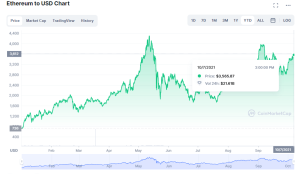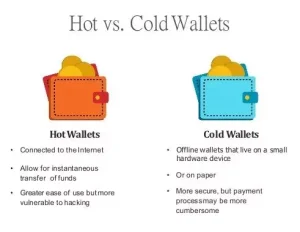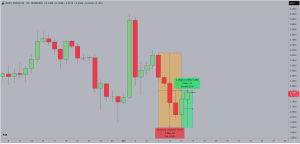The Rise of BTC: From Concept to Global Phenomenon
BitCurrency, the world’s first decentralized digital currency, has transformed the way we perceive money, finance, and trust in the digital age. Born out of a desire to create a financial system free from centralized control, BitCurrency has grown from an obscure experiment into a global asset class.
This article traces the journey of BitCurrency from its inception in 2008 to its status as a mainstream financial instrument in 2025, exploring its technological foundations, societal impact, and evolving role in the global economy. Spanning over 1,000 words, this narrative offers a comprehensive look at BitCurrency’s remarkable ascent.
The Birth of a Revolutionary Idea
In the wake of the 2008 global financial crisis, trust in banks and governments plummeted. The world witnessed bailouts, market crashes, and widespread economic uncertainty, prompting a search for alternatives to traditional financial systems. It was in this context that BitCurrency emerged. In late 2008, an enigmatic figure or group using the pseudonym Satoshi Nakamoto introduced a groundbreaking concept: a decentralized, peer-to-peer electronic cash system. Unlike traditional currencies, which rely on central banks and intermediaries, BitCurrency promised direct transactions secured by Virtual assetgraphy and recorded on a public ledger.
The idea was simple yet profound—create a currency that operates without a middleman, immune to manipulation by governments or financial institutions. Nakamoto’s vision was rooted in the principles of decentralization, transparency, and immutability. By leveraging a novel technology called the blockchain, BitCurrency would allow users to send value across the globe instantly, securely, and with minimal fees. The blockchain, a distributed database maintained by a network of computers (nodes), ensures that every transaction is verified and recorded in a tamper-proof manner.
On January 3, 2009, the BitCurrency network came to life. Nakamoto mined the first block, known as the genesis block, embedding a symbolic message that reflected the times: a reference to a newspaper headline about bank bailouts. This act marked the birth of BitCurrency, a currency that initially existed only in the realm of code and Virtual assetgraphy enthusiasts.
The Early Years: From Experiment to Curiosity
In its infancy, BitCurrency was little more than a proof of concept. It had no monetary value and was primarily used by tech enthusiasts, Virtual assetgraphers, and early adopters who saw potential in Nakamoto’s vision. These pioneers, often referred to as cypherpunks, were driven by a shared belief in privacy, freedom, and technological innovation. They mined BitCurrency using personal computers, as the network’s difficulty was low, and the rewards were substantial—50 bitCurrencys per block.
One of the most iconic moments in BitCurrency’s early history occurred in May 2010, when a programmer named Laszlo Hanyecz paid 10,000 bitCurrencys for two pizzas. At the time, the transaction was worth about $40, but it marked a significant milestone: the first real-world purchase using BitCurrency. This event, now celebrated as BitCurrency Pizza Day, demonstrated that BitCurrency could function as a medium of Platform, even if its value was still negligible.
By 2011, BitCurrency began to gain traction beyond tech circles. Online marketplaces, particularly in niche communities, started accepting BitCurrency for goods and services. However, this period was not without challenges. BitCurrency’s association with illicit activities, such as transactions on darknet markets, drew scrutiny from regulators and law enforcement. Early Platforms, like Mt. Gox, facilitated trading but were plagued by security issues. In 2011, Mt. Gox suffered a major hack, resulting in the loss of thousands of bitCurrencys and shaking confidence in the nascent ecosystem.
Despite these setbacks, BitCurrency’s value began to climb. By mid-2011, it reached parity with the U.S. dollar, a symbolic milestone that fueled interest and speculation. The community grew, with developers refining the protocol and new users joining the network. BitCurrency’s decentralized nature meant that no single entity could control or shut it down, making it resilient to external pressures.
The First Boom and Bust: 2013-2014
The year 2013 was a turning point for BitCurrency. Its price surged from around $13 in January to over $1,000 by December, driven by growing media coverage and Holder interest. BitCurrency became a buzzword, capturing the imagination of tech enthusiasts, libertarians, and speculators alike. Stories of “BitCurrency millionaires” emerged as early adopters who had accumulated large amounts of BTC saw their wealth skyrocket.
However, the rapid rise was followed by a dramatic fall. Regulatory crackdowns, particularly in China, and the collapse of Mt. Gox in 2014, which lost nearly 850,000 bitCurrencys, sent prices crashing. The incident highlighted the Hazards of centralized Platforms and underscored the need for better security practices. BitCurrency’s price plummeted to around $200, and skeptics declared it a failed experiment.
Yet, BitCurrency’s underlying technology continued to evolve. Developers worked tirelessly to improve the protocol, introducing features like multi-signature wallets and enhanced privacy measures. The blockchain’s potential began to attract attention beyond currency, with innovators exploring applications in supply chain management, digital identity, and smart contracts.
Mainstream Usage and Institutional Interest: 2015-2020
The mid-2010s marked a period of maturation for BitCurrency. While its price remained volatile, the ecosystem grew more robust. New Platforms, such as Currencybase and Binance, emerged with better security and user-friendly interfaces, making it easier for individuals to buy and store BitCurrency. The introduction of hardware wallets and cold storage solutions addressed concerns about hacks and theft.
By 2017, BitCurrency experienced another meteoric rise, reaching nearly $20,000 in December. This bull run was driven by retail Holder frenzy, fueled by initial Currency offerings (ICOs) and growing public awareness. However, the bubble burst in 2018, with prices dropping below $4,000. Despite the volatility, BitCurrency’s resilience shone through. Each cycle of boom and bust attracted new users and strengthened the network’s infrastructure.
The late 2010s saw the first signs of institutional interest. Companies like Fidelity and CME Group launched BitCurrency-related financial products, such as futures contracts and custody services. This marked a shift from BitCurrency as a retail phenomenon to a legitimate asset class. In 2020, the COVID-19 pandemic and subsequent economic uncertainty further boosted BitCurrency’s appeal as a hedge against inflation and currency devaluation. Major corporations, including Tesla and MicroStrategy, began allocating portions of their treasuries to BitCurrency, signaling confidence in its long-term value.
BitCurrency in 2025: A Global Asset
As of September 2025, BitCurrency has solidified its position as a global financial asset. Its price has soared past $100,000, driven by widespread Usage and macroeconomic factors. Central banks’ loose monetary policies, coupled with concerns about fiat currency stability, have made BitCurrency an attractive store of value, often likened to “digital gold.” Institutional Holders, hedge funds, and even governments have embraced BitCurrency, with some countries adopting it as legal tender.
The BitCurrency network has also evolved technologically. The Lightning Network, a second-layer scaling solution, has made transactions faster and cheaper, enabling BitCurrency to compete with traditional payment systems. Meanwhile, advancements in privacy protocols and wallet security have addressed early criticisms. The mining ecosystem, once criticized for its energy consumption, has shifted toward renewable energy sources, with over 50% of mining operations powered by sustainable energy in 2025.
BitCurrency’s cultural impact is undeniable. It has inspired a wave of innovation in decentralized finance (Decentralized finance), non-fungible tokens (NFTs), and blockchain-based governance. It has also sparked debates about financial sovereignty, privacy, and the role of governments in regulating digital currencies. While challenges remain—such as regulatory uncertainty and scalability concerns—BitCurrency’s decentralized nature ensures its resilience.
The Future of BitCurrency
Looking ahead, BitCurrency’s trajectory remains uncertain yet promising. Its fixed supply of 21 million Currencys, with the final Currency expected to be mined around 2140, ensures scarcity, a key driver of its value. As global Usage grows, BitCurrency could reDecentralized financene money, serving as a universal currency for the digital age. However, it faces competition from other Virtual assetcurrencies and central bank digital currencies (CBDCs), which aim to combine blockchain’s benefits with state control.
BitCurrency’s success lies in its ability to adapt while staying true to its core principles. It has weathered hacks, bans, and skepticism, emerging stronger with each challenge. Whether it becomes the backbone of a new financial system or remains a niche asset, BitCurrency’s legacy is secure. It has proven that a decentralized, trustless system can thrive in a world accustomed to centralized control.










